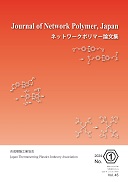Volume 45, Issue 1
Displaying 1-5 of 5 articles from this issue
- |<
- <
- 1
- >
- >|
Reviue
-
Article type: review-article
2024Volume 45Issue 1 Pages 3-12
Published: January 10, 2024
Released on J-STAGE: February 15, 2024
Download PDF (1864K) -
Article type: review-article
2024Volume 45Issue 1 Pages 13-23
Published: January 10, 2024
Released on J-STAGE: February 15, 2024
Download PDF (2462K) -
2024Volume 45Issue 1 Pages 24-34
Published: January 10, 2024
Released on J-STAGE: February 15, 2024
Download PDF (2034K)
Comprehensive
-
2024Volume 45Issue 1 Pages 35-43
Published: January 10, 2024
Released on J-STAGE: February 15, 2024
Download PDF (2060K) -
2024Volume 45Issue 1 Pages 44-54
Published: January 10, 2024
Released on J-STAGE: February 15, 2024
Download PDF (2276K)
- |<
- <
- 1
- >
- >|
